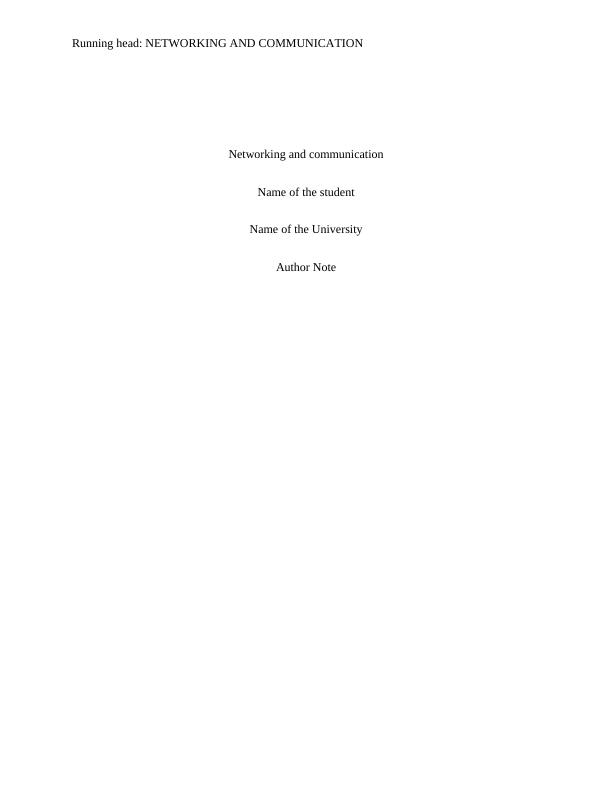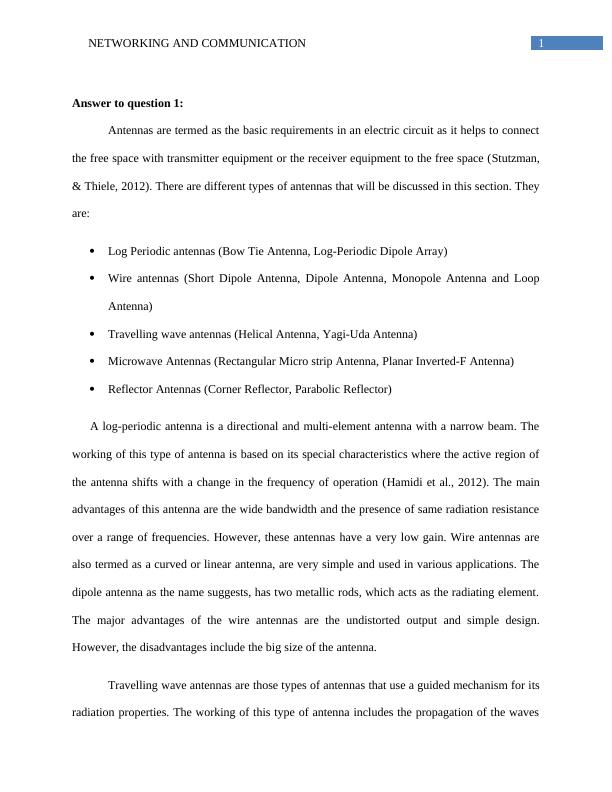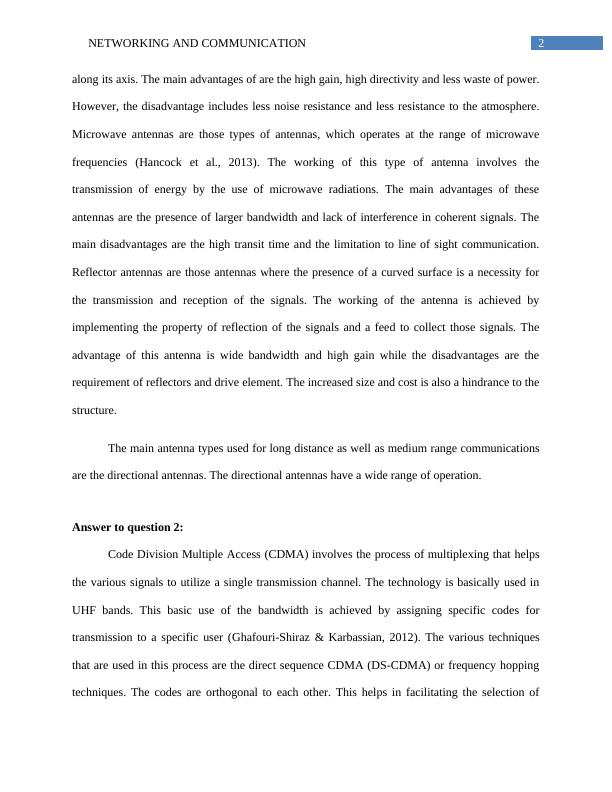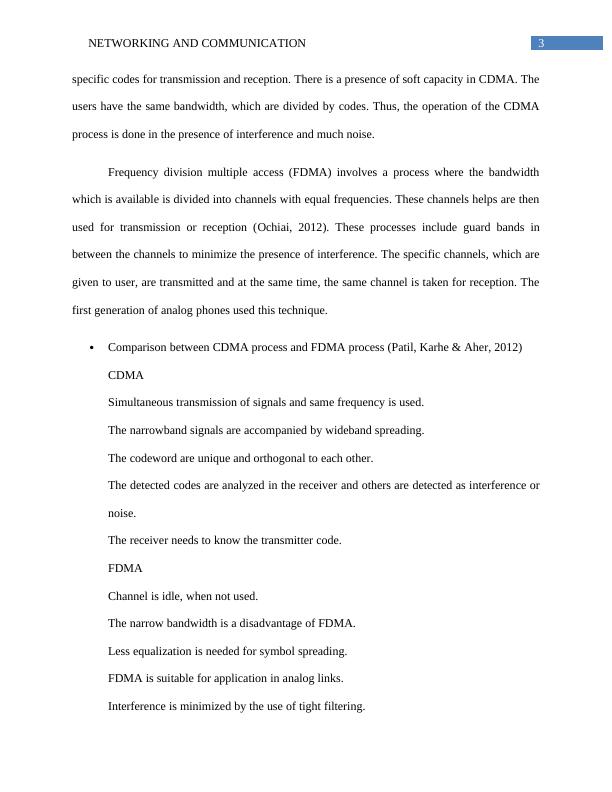Ask a question from expert
CSC00240 | Networking and Communication
11 Pages1163 Words298 Views
Southern Cross University
Data Communications and Networks (CSC00240)
Added on 2020-03-07
About This Document
CSC00240 - Question Answers based on Networking and Communication, 1. Research technologies in detail and pay specific attention to how they are used as well as the strengths and weaknesses of a given antenna. 2. Compare and contrast the multiplexing techniques CDMA and FDMA.
CSC00240 | Networking and Communication
Southern Cross University
Data Communications and Networks (CSC00240)
Added on 2020-03-07
BookmarkShareRelated Documents
End of preview
Want to access all the pages? Upload your documents or become a member.
CSC00240 – Data Communications and Networks||Southern Cross University||Assignment
|6
|1367
|329
ITC513 - Wireless Networking Concepts | Assignment
|9
|1334
|42
COMP 101-Types of Antenna | wireless networking
|7
|1940
|447
ITC 513 - Wireless Networking Concepts : Assignment
|5
|1066
|32
Antennas and Connectivity Assignment
|14
|2486
|236
Further Tabulated as Per the Frequency
|8
|1510
|433



